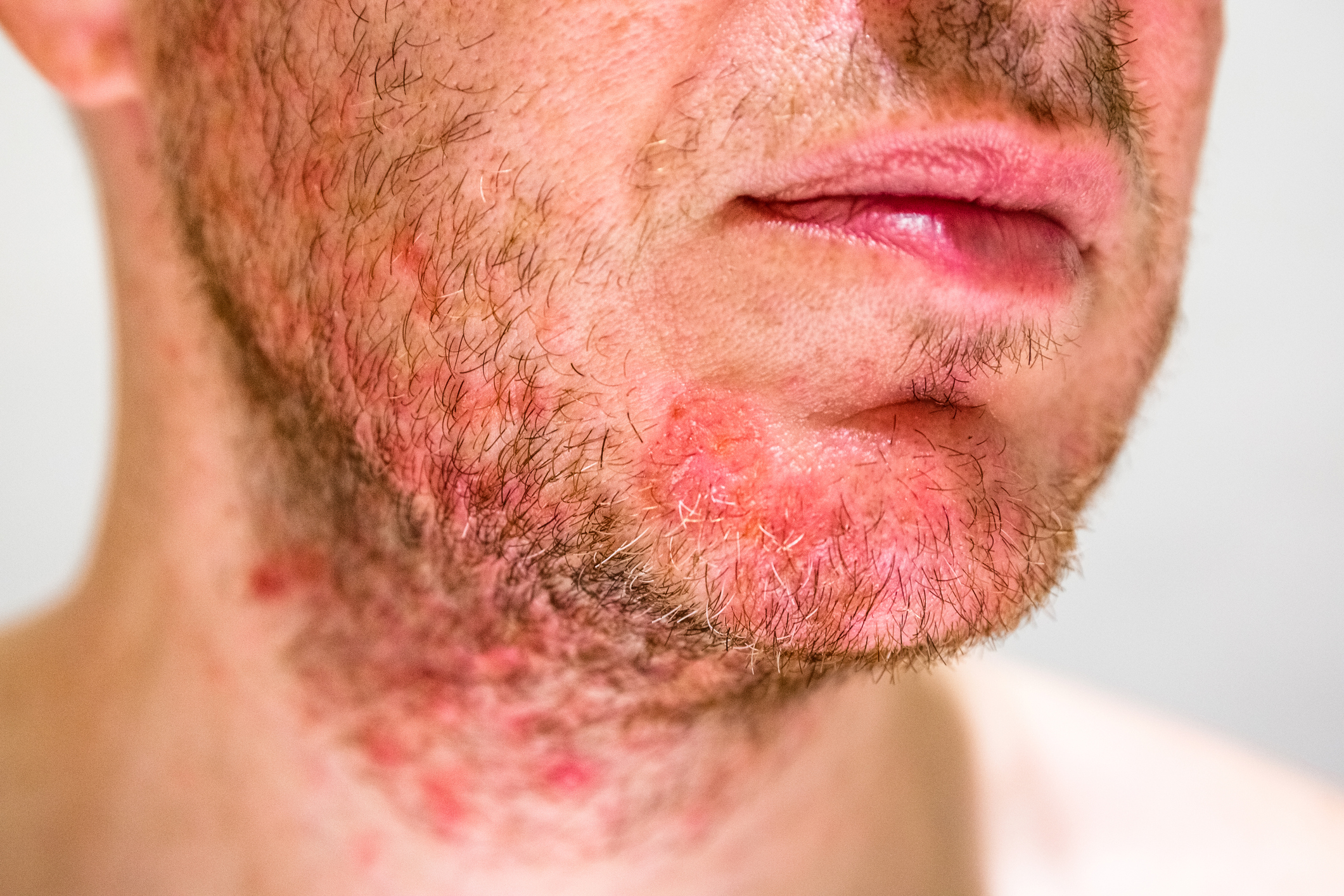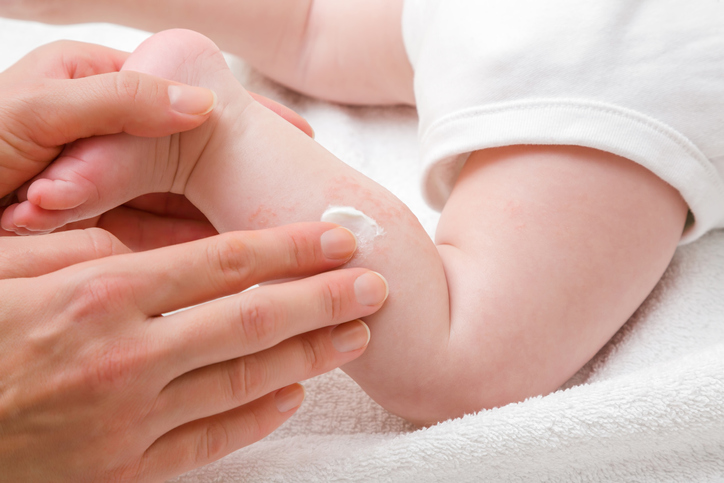If you have eczema you’ll know how difficult it can be to deal with.
But you’re not alone in dealing with this condition -- it’s estimated that 1 in 10 people will develop eczema during their lifetime, with most experiencing it during early childhood.
Eczema affects up to 15 million people in the UK and over 31 million people in the US -- but there are many types of the condition.
What does eczema look like?
Typically, eczema causes your skin to become dry, flaky and itchy during a flare-up, and it may become cracked or bleed if you scratch it a lot.
However, as there are different types of eczema, the causes for each type vary. You can also develop more than 1 type of eczema on the same part of your body.
Learning more about the type of eczema you have and what may have caused it is the first step to treating and managing it, so that it doesn’t disrupt your daily life.
Types of eczema
The different types of eczema are:
- atopic eczema (atopic dermatitis)
- contact dermatitis
- pompholyx (dyshidrotic eczema)
- nummular dermatitis (discoid eczema)
- seborrheic dermatitis
- stasis (varicose eczema)
Atopic eczema

The most common type of eczema, atopic dermatitis mainly affects children but it can appear in adults.
Symptoms of atopic eczema may vary depending on how severely affected you are, but usually you’ll have red or itchy patches on the hands, the inside of the elbows and the backs of the knees.
What causes atopic eczema?
It’s not clear what causes this type of eczema, but it’s generally thought that genetics plays a role. It can also be triggered by environmental factors (such as pollen or dust) and food allergens.
There’s no cure for atopic dermatitis, but effective treatment (such as moisturisers or ointments) can help you manage the condition and minimise flare-ups.
If you think you have atopic dermatitis, you should see a doctor. They will be able to diagnose the type of eczema you have and prescribe the best medication.
Contact dermatitis
Contact dermatitis usually appears on the hands and face, and the skin will become blistered, cracked and itchy.
If you have darker skin, the affected area may become a darker brown or even turn purple or grey. In lighter skin, the area may be red.
What causes contact dermatitis?
Contact dermatitis is caused by coming into ‘contact’ with an irritant such as soap, perfume or cleaning detergent, or an allergen like nickel in jewellery.
It can also be caused by regular contact with water, which can be a problem for people who work in certain jobs, such as hairdressers and chefs.
If you can identify the substance or material that causes your eczema, you can take steps to avoid it. However, if you do have a flare-up, a pharmacist can recommend a moisturiser to prevent your skin from becoming dry and itchy.
You should see a doctor if your symptoms are severe or keep coming back, as they may refer you to a skin specialist (dermatologist) to find out the cause.
Pompholyx

This type of eczema appears as small blisters on the palms of your hands, fingers and soles of your feet. The blisters may be very itchy and leak fluid, and you may experience a burning sensation in the skin.
If the skin becomes infected, you may notice pus coming from the blisters or the blister may form a crust.
It’s more common in adults aged under 40.
What causes pompholyx?
There’s no clear cause, but you’re more likely to develop pompholyx(dyshidrotic eczema) if you have hay fever or atopic dermatitis, or both.
However, it can also be triggered by stress or sweating -- it’s more common during warmer months or in warmer climates. It cal also be an allergic reaction to a material or substance, such as shampoo, perfume, chemicals in cleaning products, make-up products or metals like nickel or cobalt.
Pompholyx can also be triggered by a fungal skin infection.
You should see a doctor if you think you have pompholyx. If your symptoms are severe or keep coming back, a doctor may refer you to a dermatologist for further treatment.
Discoid eczema
This form of eczema usually appears on the chest, tummy, back, forearms or lower legs, but can affect other parts of the body, such as the hands or feet.
You may notice round or oval-shaped patches of eczema, often with distinct edges. These patches can be up to 2cm in size or smaller, and may be red, brown or pink in colour.
What causes discoid eczema?
It’s not known what causes discoid eczema, but it doesn’t appear to be passed down through families.
However, it has been linked to atopic and contact dermatitis, and tends to flare up when the skin is dry. As a result, this type of eczema may be worse in winter or in cold climates where central heating can dry out the skin.
Try to keep the skin moisturised (using an emollient) to help prevent outbreaks. But if you do experience a flare-up, see a doctor who may prescribe 1 or more the medications generally used to treat eczema.
It may also help to use an emollient instead of soap when washing, and avoiding anything that may trigger the eczema, such as detergents.
Seborrheic dermatitis

This type of eczema is slightly more common in men than women and affects areas of the skin which tend to be greasy (sebaceous) such as the scalp, face or front of the chest.
Dandruff for example is a form of mild seborrheic dermatitis, affecting the scalp.
Treatment for this type of eczema will depend on where on your body the eczema appears. If it affects the scalp, for example, certain scalp lotions and special shampoos can be used to help reduce symptoms.
What causes seborrheic dermatitis?
There’s no single cause, but stress and tiredness can trigger seborrheic dermatitis.
It may also be caused by the body’s immune reaction to excessive growth of the yeast malassezia, which lives on the skin.
Stasis (varicose eczema)
If you have varicose eczema, you’ll notice flaky, scaly or itchy areas on your legs, close to larger or bulging (varicose) veins.
This type of eczema tends to be caused by varicose veins.
What to do if you think you have varicose eczema
If you think you have varicose eczema, you should see a doctor. They can help you treat the underlying cause -- varicose veins -- and provide treatment for the eczema.
Like other types of eczema, you’ll need to apply a moisturiser (emollient) regularly to help prevent dryness, and you may be prescribed topical corticosteroids to reduce inflammation in the affected area.
When to see a doctor about eczema
Eczema is a long-term or chronic condition, so effective management is important. Though it’s not contagious or serious, there is a risk of infection if the skin becomes cracked or raw, so correct treatment is crucial.
If you have or think you have eczema, you should see a doctor. They can confirm the type of eczema you have and help you find the best treatment. This may be a combination of medication and self-care.
For more information, read about the best treatments for eczema and natural treatments for eczema.



